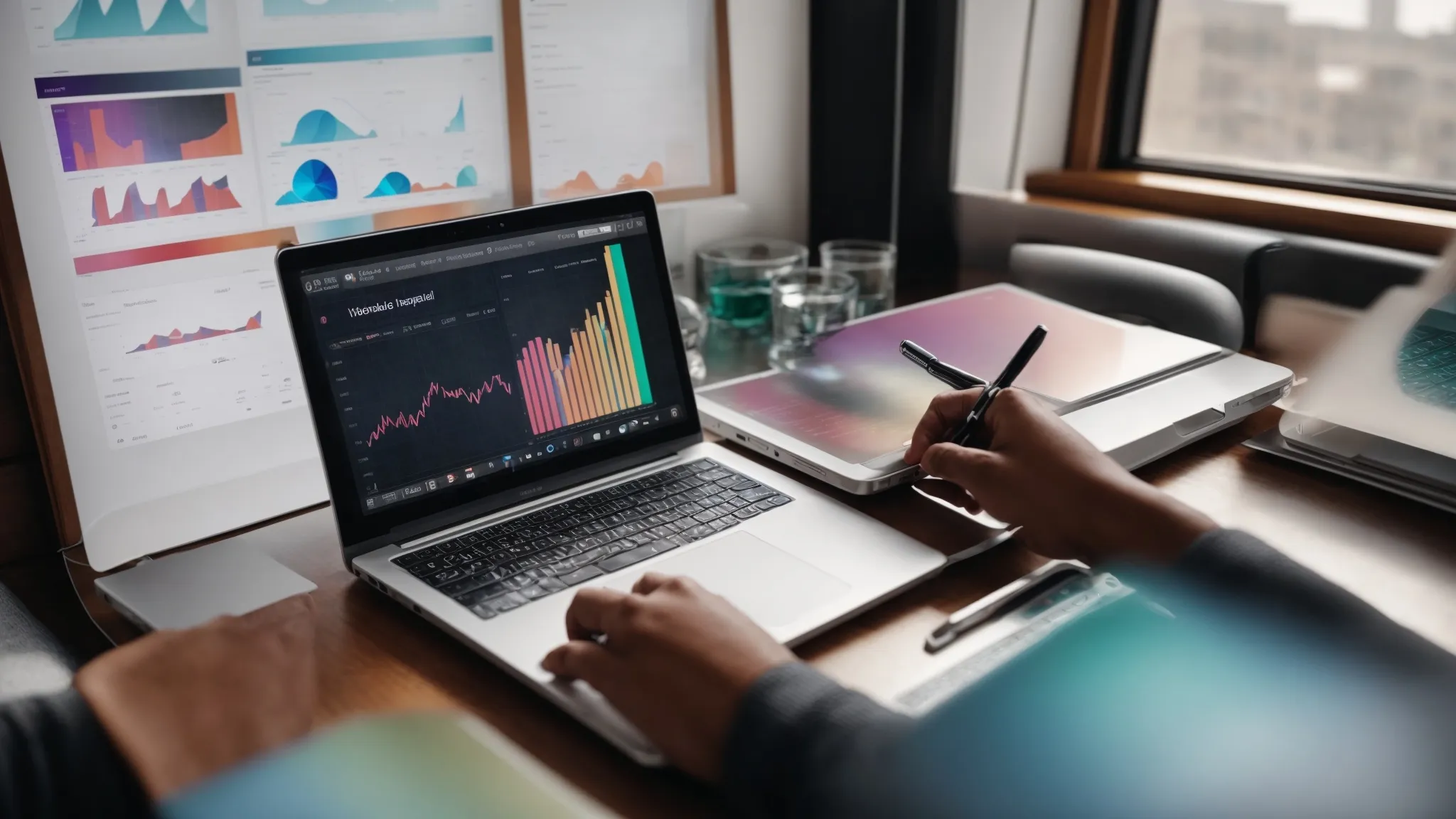Link Building Infographics: Boost SEO with Engaging Visuals
For digital marketing and search engine optimization purposes, creating content that drives traffic and builds authority is no small task. Acquiring quality backlinks is a proven strategy […]
For digital marketing and search engine optimization purposes, creating content that drives traffic and builds authority is no small task. Acquiring quality backlinks is a proven strategy for improving your ranking, but not just any content will do. Enter link building infographics, a combination of visuals and data that engages audiences and attracts valuable backlinks.
Because infographics are naturally shareable, they are an interesting asset for earning links from authoritative websites. When used strategically, an infographic for link building can become a powerful tool in your digital marketing plan.
In this article, we’ll explore the role of link building infographics in driving SEO success. From crafting eye-catching visuals to promoting them effectively, you’ll learn how to leverage them to grow your online presence and generate high-quality backlinks.
Key Takeaways
- Infographics can boost SEO by enhancing user engagement and increasing backlinks
- Visual appeal and strategic distribution are essential for infographics to succeed in link building
- Mobile-friendliness and quick loading times of infographics are crucial for SEO effectiveness
- Tailored outreach and follow-ups can secure high-quality backlinks and strengthen SEO
- Incorporating interactive elements in infographics can increase user engagement and SEO impact
The Power of Infographics in SEO
Infographics elevate a brand’s search engine visibility by presenting information in a visually captivating way. This is possible because they are a visual representation of information, data, or knowledge designed to convey complex ideas quickly and clearly.
Infographics can be used for:
- Explaining concepts, historical events, or processes.
- Promoting brands, products, or services by summarizing data or conveying key points.
- Presenting news, survey results, or research findings in an easily digestible format.
For instance, embedding an infographic in a press release amplifies the visibility of that content, encouraging journalists and bloggers to reference and link back to the source. This exchange provides audiences with value while also signaling to search engines the relevance and authority of the brand’s website in its niche.
There’s actually a psychological factor to this. Human cognition gravitates toward visual data. Infographics harness this tendency by merging analytics, research findings, and compelling design into a single, impactful visual.
In addition, infographics can help improve the user experience (UX). Search engines like Google consider this factor when ranking your website, leading to better metrics—such as bounce rate and time spent on the page.
Why Infographics Attract High-Quality Backlinks
Link building is an SEO field that focuses on acquiring hyperlinks from other websites to your own. Search engines value backlinks highly, as a reputable website can enhance your visibility online. This is key in building brand awareness for your company.
Link building infographics serve as an anchor for earning high-quality backlinks due to their unique combination of vivid charts, easily understood icons, and compelling narratives that stand out in a crowded digital marketing space.
Quality infographics can effectively capture attention, prompting other sites to link to the content as a resource. Brands that skillfully craft an infographic might position themselves as thought leaders, encouraging other websites to cite their work as a valuable resource in their own content.
In summary, infographics for link building:
- Simplify Complex Concepts: It makes them become go-to resources for websites that need to explain these concepts to their readers, resulting in more organic backlinks for you.
- Are Highly Shareable on Social Media: Platforms like Pinterest, LinkedIn, and Instagram thrive on visual content, making link building infographics ideal for social sharing, which can help with your organic search results.
- Offer Ready-to-Use Content: Infographics are convenient for other content creators, as they can embed them directly into their own articles or blog posts with a simple embed code.
How to Craft Compelling Infographics for Maximum Impact
Crafting compelling link building infographics is a strategic blend of creativity, design, and purpose. Below, you’ll see the most important steps to take.
1. Identify Topics That Resonate With Your Audience
To truly master the art of infographic link building and enhance SEO, it is essential to identify topics that resonate with your target audience. One method is by analyzing social media trends, monitoring forums, and leveraging keyword research tools to capture the hot topics of your industry.
Focus on subjects that align with your niche and address your audience’s interests or pain points. Know that infographics that answer questions or simplify complex ideas naturally attract more shares and links.
2. Leverage Data-Driven Insights for Topic Selection
Leveraging data-driven insights for topic selection is a cornerstone of any successful link building campaign. Brands that use analytics and user behavior data can pinpoint what captivates their audience’s attention, allowing them to craft infographics that resonate strongly.
For content marketing and link building, this tailored approach ensures the resulting visuals are informative and significantly more effective in acquiring backlinks, as they address specific interests and challenges faced by the audience:
Analytics Tool |
Insight Gathered |
Relevance to Link Building Campaign |
Behavioral data analysis |
User interaction patterns with content |
Guides the creation of engaging infographics that earn links |
User feedback platforms |
Direct audience pain points and preferences |
Shapes infographics to provide solutions, encouraging backlinks |
A/B testing results |
Effective elements that increase user engagement |
Enhances infographic design for increased sharing and link potential |
3. Focus on Creating Engaging Content
Infographics are most effective when they take complex topics and make them easy to understand. Therefore, even though they are visual assets, creating high-quality, engaging content is a must—especially when you want to optimize it for SEO.
So, break down the information. Present it in bite-sized chunks, using headers and subheaders to organize the content. These elements should encapsulate the core message of the visual content and seamlessly integrate select keywords, making the infographics easily discoverable via search engines.
Additionally, pay attention to the storytelling elements. Structure the infographic so that it flows logically and guides the reader from start to finish.
4. Design for Clarity and Aesthetic Appeal
A well-designed infographic allows for the seamless dissemination of information in a visually engaging manner. Brands must consider the selection of colors and fonts that not only align with their logo and brand description but also facilitate easy reading and retention of information.
Good practices for the graphic design are:
- Color Scheme and Typography: Use a consistent and visually pleasing color palette with legible fonts.
- Balance Elements: Ensure the design isn’t cluttered, using white space to guide the viewer’s eye.
- High-Quality Graphics: Use icons, charts, and illustrations to enhance understanding without overwhelming the reader.
5. Make It Shareable
Infographics are designed to be shared—make it easy for others to do so. Provide a ready-to-use embed code so websites can share the infographic while linking back to your site, turning those asses into link building infographics.
Also, add a call to action (CTA) to encourage readers to share or link to the infographic in their own content.
6. Ensuring Mobile-Friendliness and Fast Loading Times
SEO effectiveness of infographics relies heavily on mobile friendliness and swift loading times. This approach reduces bounce rates and enhances user engagement, which search engines interpret as a marker of quality content. This can potentially increase rankings and backlink opportunities.
The benefits of optimizing infographics for mobile compatibility extend beyond mere accessibility. They significantly contribute to a superior user experience, fostering greater interaction and shareability. Here’s a rundown of enhancements that lead to SEO success:
- Responsive design adjusts to various screen sizes, keeping visuals sharp and text legible on any device.
- Compressed image files accelerate loading times, retaining visitors’ attention and decreasing page abandonment.
- Accelerated Mobile Pages (AMP) implementation can further speed up the mobile browsing experience, making infographics a quick-loading asset in a site’s SEO strategy.
Developing a Promotion Plan for Your Infographics
Creating a compelling infographic is only the first step. To maximize its reach and impact, you need a solid promotion plan that ensures your content reaches the right audience and earns valuable backlinks.
Sharing Strategies for Social Media Platforms
Dissemination through social media platforms must be strategic and intentional for infographics to play a pivotal role in search engine optimization. A brand’s promotion plan should focus on tailoring content to the unique characteristics and audience behaviors of each platform, such as utilizing hashtags on Twitter for greater discoverability or tapping into Instagram’s visual-centric user base.
This targeted sharing ensures that the infographic reaches a broader audience and contributes to link-building efforts. Additionally, it is important to align the sharing schedule with times when users are most active. This increases the likelihood of likes, shares, and comments, which can positively influence the search rankings of the content associated with the infographic.
Engaging With Influencers and Industry Leaders
Reaching out to influencers and industry leaders can significantly amplify an infographic’s impact. These partnerships foster increased visibility and credibility. When these respected figures share an infographic, it reaches a wider audience and adds weight to the brand’s authority.
Collaborating with thought leaders for guest posting opportunities or featuring expert insights within the infographic itself are practical methods that enhance engagement and support search engine optimization goals.
Utilizing Content Syndication Networks
Content syndication networks represent a powerful avenue for amplifying the reach of infographics and reinforcing link building strategies. By distributing infographics to established platforms with a broad user base, brands can drive more traffic to their websites and encourage authoritative websites to include their links.
Syndication extends the content’s lifespan and maximizes visibility—key aspects for enhancing a website’s SEO profile. Here’s a practical guide to using content syndication networks effectively for infographic promotion:
- Choose platforms that align with the infographic’s topic and intended audience for targeted exposure.
- Partner with networks that offer tracking metrics to gauge the performance and impact of your infographics.
- Ensure to include a backlink to your original post or page to leverage the syndicated content for link building purposes.
Building a Targeted Outreach List
Developing targeted outreach lists is paramount for securing high-quality backlinks for infographics, which greatly bolsters a brand’s SEO strategy. If you intend to promote your link building infographics, reach out to influencers and content creators with tailored messages explaining how your infographic can benefit their audience.
A genuine, personalized approach not only garners attention but also fosters lasting relationships, paving the way for ongoing collaboration. By crafting a personalized contact list of potential partners, brands enhance their chances of building mutually beneficial relationships that champion their content and elevate their online presence.
In addition, following up with contacts after an initial outreach can help secure backlinks for infographics and reinforce the SEO strategy. Nurturing these professional relationships by checking in regularly, offering additional value, or sharing relevant content demonstrates a commitment to a long-term partnership beyond a single interaction.
How To Measure the Success of Your Infographic Campaigns
Evaluating an infographic’s impact on SEO involves assessing backlink acquisition, analyzing traffic and engagement metrics, and adjusting strategies based on data insights. Learn more!
Tracking Backlink Acquisition and Quality
Naturally, one key indicator of a successful infographic campaign is the acquisition of high-quality backlinks. A rigorous analysis involves monitoring an infographic’s backlinks over time, assessing not just their quantity but also the authoritative weight each carries.
This can be achieved through the use of dedicated backlink analysis tools, which provide insights into the relevance and trustworthiness of each backlink. Such evaluation helps brands optimize their future content to garner even more impactful and high-quality backlinks.
Analyzing Traffic and Engagement Metrics
Analyzing traffic and engagement metrics of your link building infographics offers invaluable insight into the performance of infographic campaigns in SEO strategies. By tracking parameters such as page views, time spent on the page, and interactions with the content, brands can discern the level of audience engagement and the effectiveness of infographics in retaining user interest.
Adjusting Strategies Based on Data Insights
To ensure continuous improvement, adjust strategies based on data insights. This allows brands to better their infographic campaigns, ensuring that they align more closely with the needs and behaviors of their target audience.
By analyzing metrics such as click-through rates from infographics to the main website or the number of social shares, businesses can refine their visual content strategy to be more appealing and relevant to users.
Here are steps brands should consider in their data-driven strategy optimization:
- Evaluate which infographics are performing best in terms of engagement and backlinks and produce more content on similar topics or in similar formats.
- Identify which platforms are generating the most traffic and focus promotion efforts on these channels to increase reach and backlink possibilities.
- Analyze user feedback and comments to refine messaging and visual elements, ensuring that future infographics resonate even more with the intended audience.
Future Trends in Infographic Link Building
As the digital landscape evolves, interactive infographics emerge as a powerful tool for user engagement, signaling a shift in the tactics used to enhance SEO strategies. This happens because they enhance user engagement by allowing viewers to participate actively in the exploration of data.
These advanced infographics offer an immersive experience catering to the user’s desire for interactivity. They make complex information more digestible and shareable. This dynamic form of visual content holds immense potential to elevate SEO through deeper audience involvement and prolonged site visits.
As users interact with these elements, they are more inclined to explore the brand’s website further, offering a dual advantage: increased user engagement and enhanced potential for backlinks:
|
Interactive Feature |
User Engagement Benefit |
SEO Impact |
|
Clickable Elements |
Encourages active participation |
Higher dwell time and potential for internal linking |
|
Animation |
Makes data interpretation enjoyable |
Improves bounce rates and stimulates social sharing |
|
Data Exploration Tools |
Empowers users to personalize data view |
Increases return visits and personal investment in content |
Frequently Asked Questions
How do infographics enhance SEO efforts?
Infographics boost SEO by enhancing user engagement, increasing website traffic, and earning backlinks, all vital for higher search engine rankings.
What steps are involved in infographic link building?
Infographic link building involves designing compelling visuals, reaching out to relevant publishers, and securing backlinks to boost SEO efforts.
Which factors make an infographic compelling and share-worthy?
A compelling infographic is share-worthy when it displays clear data visualization, is aesthetically appealing, provides easily digestible information, and tells a memorable story relevant to its audience.
How can I measure my infographics’ impact on SEO?
Measuring an infographic’s SEO impact involves tracking metrics like backlinks, user engagement, social shares, and search ranking for related keywords.
What are the future trends in infographic link building?
Upcoming infographic link-building trends hinge on interactive elements, user-centric designs, and data storytelling to boost engagement and shareability in increasingly visual online environments.
Improve Your Website’s Backlink Profile
Infographics are powerful tools for enhancing SEO. They transform complex data into visually engaging content that naturally attracts high-quality backlinks. By leveraging strategic design and promotional outreach, including social media and content syndication networks, brands can significantly increase their online visibility and authority.
However, link building goes beyond that. If you’re looking to enhance your backlink profile and improve your online presence, learn more about LinkGraph’s link building services.














































































